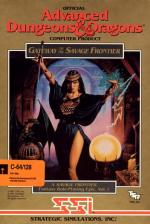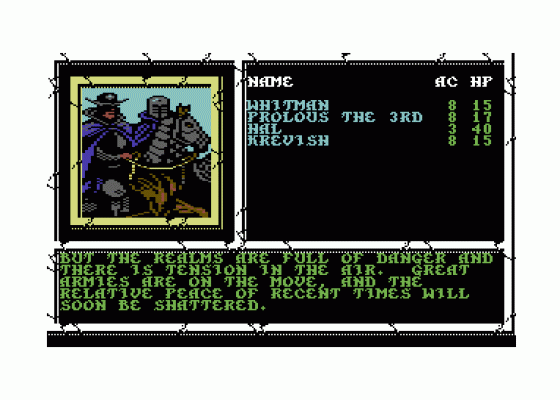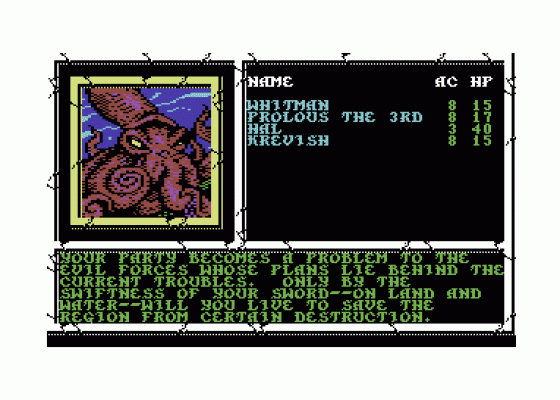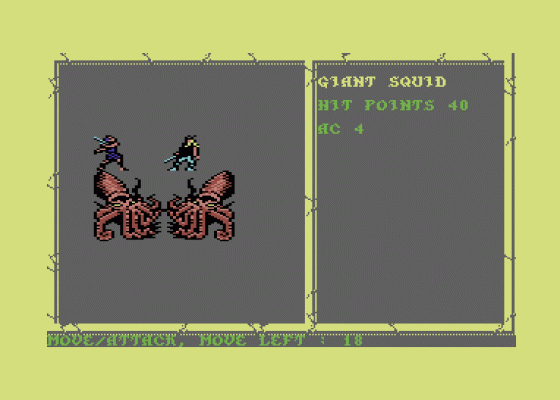
Commodore Format
 1st December 1991
1st December 1991
Publisher: Strategic Simulations Inc
Machine: Commodore 64/128
Published in Commodore Format #15
Gateway To The Savage Frontier (Strategic Simulations Inc)
New AD&D games are as much a part of the calendar as Halloween. Just to prove it, here I am playing Gateway To The Savage Frontier on Halloween. Along with Fe'Thos the cleric, Gulail the wizard/warrior, Evswell the thief and a few others, I've travelled the Forgotten Realms and fought trolls for their bounty value to a priestess who one day my friends and I will have to overthrow. Life is getting complicated and this game isn't helping.
Savage Frontier continues the SSI tradition of giving you a game world to explore vicariously, by using up to six personae, called characters. You can make these characters up yourself or let the computer do that for you. Either way, the program follows the rules of that strange game, Dungeons and Dragons. The manual tells you something about the rules but there aren't many things to learn. Once you know that a wizard forgets a spell every time he casts it you remember to remind him to learn those spells again afterwards... If you see what I mean.
This whole game is won by looking after what are called 'housekeeping' details like that. Another important habit to get into early on is the one of saving your game after every scrap. This, coupled with the size of the game (it spans three double-sided disks), makes Gateway To The Savage Frontier a massive game, requiring hundreds of hours to finish. And to finish it, you have to save the world (what else?).

Play itself proceeds at a pace you wouldn't be surprised if sleepy snails made. Although you control all your characters' actions through the joystick, you interact with the game by finding your way around a massive nested menu system (that's a menu system in which every item on the menu opens up another menu of choices). It makes the going very slow, even once you know you your way around the game system. If you're patient enough to give it a read, you'll find the manual helpful as it explains how all the menus work. You can't make the game any less complicated than it already is, but you can make it more so. When you get into a fight, you can hand over the reactions of any or all of your characters to the computer. But the exploration you have to do yourself.
And there's a lot of it. By exploring the cities, towns, ancient sites and land of the Forgotten Realms, you stumble across little adventures in the form of computer-controlled characters who offer rewards for tasks completed. A thieves' guild in one town wants a neighbouring towns evil cleric killed, for example. If you take up that quest, you'll be introduced to another, and so on.
But it doesn't matter which route you take. You either survive long enough to find something to do or get wiped out. If you just watch the world go by for long enough, it will get nasty, swallow you up and spit out your bones. It's like that.
If the idea of a complex adventure stimulates your curiosity gland, give it a bash. If you like your games to dish out the action a little faster or you get put off by complexity, consider yourself duly warned.
Bad Points
- Dead expensive!
- Long and frequent disk access keeps gameplay slow-paced.
- Confusing for newcomers.
- Deeply involved game that requires a lot of attention to detail.
- A bit like all the others of this kind.
- Too many pointless events.
Good Points
- A massive adventure that unfolds bit by bit and will keep you busy for months.
- Good game system once you get used to it.
- The manual is really worth a read and contains loads of background detail.
- You can make the game as complex as you like or leave some tasks to the computer.
- Freedom to explore.









